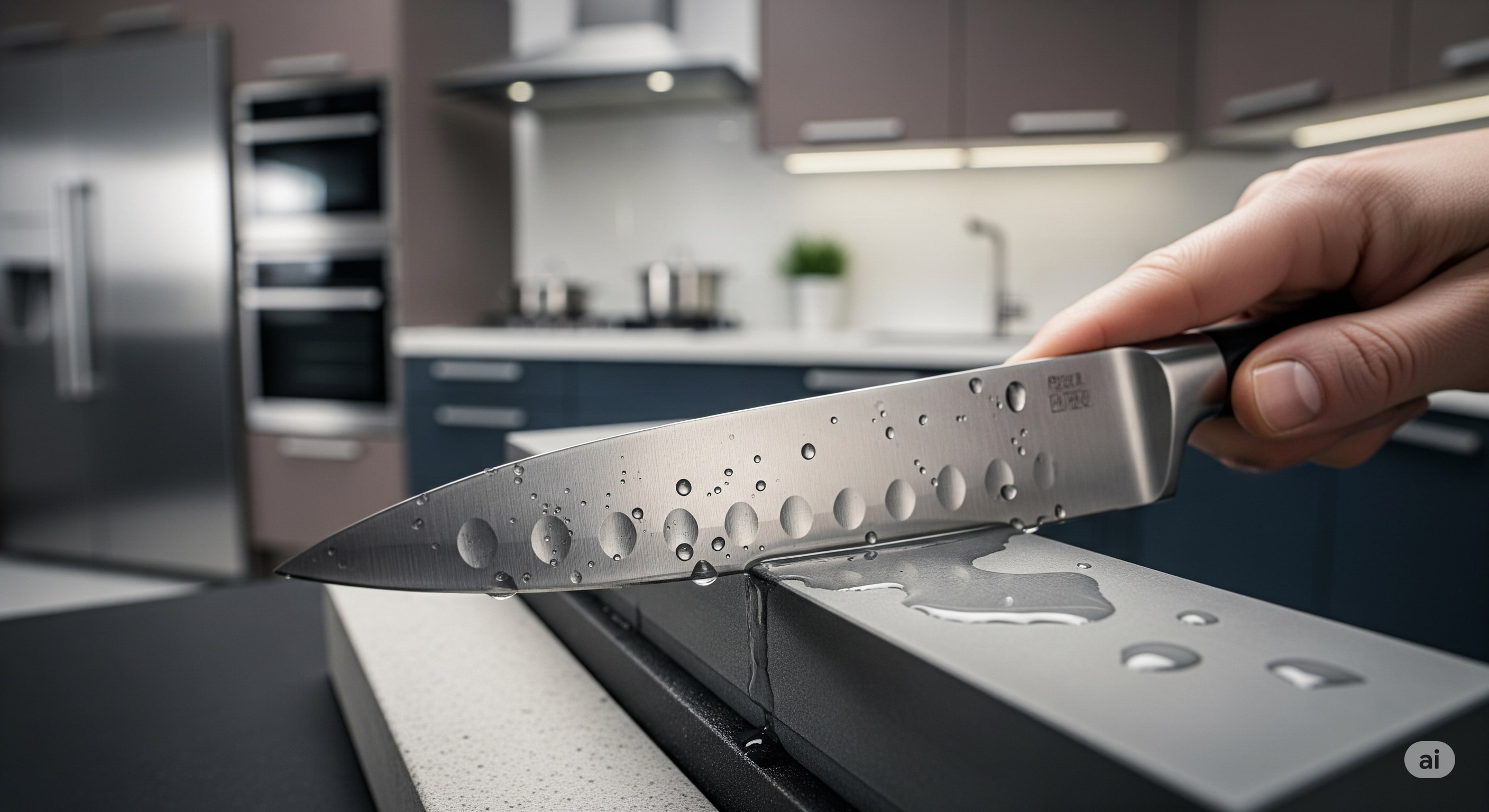What's the Difference Between Honing and Sharpening Kitchen Knives?
Understanding how to sharpen kitchen knives begins with distinguishing between honing and sharpening - two different maintenance processes. Honing realigns the blade edge using a honing steel or ceramic rod, fixing minor edge deformations without removing metal. This quick process should be done regularly, even daily for frequently used knives, to maintain peak performance between sharpenings.
Sharpening actually removes metal to create a new edge using whetstones, sharpening systems, or electric sharpeners. This process is needed less frequently - typically every few months for home cooks, depending on usage and knife quality. Signs that sharpening is needed include difficulty cutting through paper cleanly, crushing rather than slicing tomatoes, or the blade failing to catch when drawing across your fingernail. Proper honing extends time between sharpenings significantly.
📺 Featured Video

Sharpening a Kitchen Knife In Real Time - How To Sharpen A Chefs Knife
by OUTDOORS55
How Do You Use a Whetstone to Sharpen Knives Properly?
Mastering how to sharpen kitchen knives with whetstones requires understanding grit progression and proper technique. Start with coarse grits (400-1000) for very dull knives, medium grits (1000-3000) for regular maintenance, and fine grits (4000-8000) for polishing. Soak water stones for 10-15 minutes before use, until air bubbles stop rising.
Maintain consistent 15-20 degree angles per side for most Western knives, or 10-15 degrees for Japanese knives. Use smooth, controlled strokes along the entire edge length, applying light pressure. Count strokes to ensure even sharpening on both sides. Work through progressively finer grits, removing scratches from the previous grit before advancing. Finish by testing sharpness on paper or tomatoes, and clean the blade thoroughly to remove metal filings.
📺 Featured Video

How to use a whetstone #knifesharpening
by BM Caterers
What Common Mistakes Should You Avoid When Sharpening Knives?
The most critical mistake when learning how to sharpen kitchen knives is inconsistent angle maintenance, which creates uneven edges and poor cutting performance. Using too much pressure can damage blade geometry and remove excessive metal unnecessarily. Skipping grits or not fully removing scratches from previous grits results in poor edge quality and shortened edge retention.
Never use pull-through sharpeners on quality knives, as they can chip edges and remove too much metal. Avoid electric sharpeners for expensive or Japanese knives, which require gentler treatment. Don't sharpen serrated knives with standard methods - they need specialized techniques. Finally, rushing the process leads to poor results - proper sharpening requires patience and attention to detail. Always test sharpness safely and clean blades thoroughly after sharpening to remove metal particles.
📺 Featured Video

How to sharpen your knives 101!
by Babish Culinary Universe
